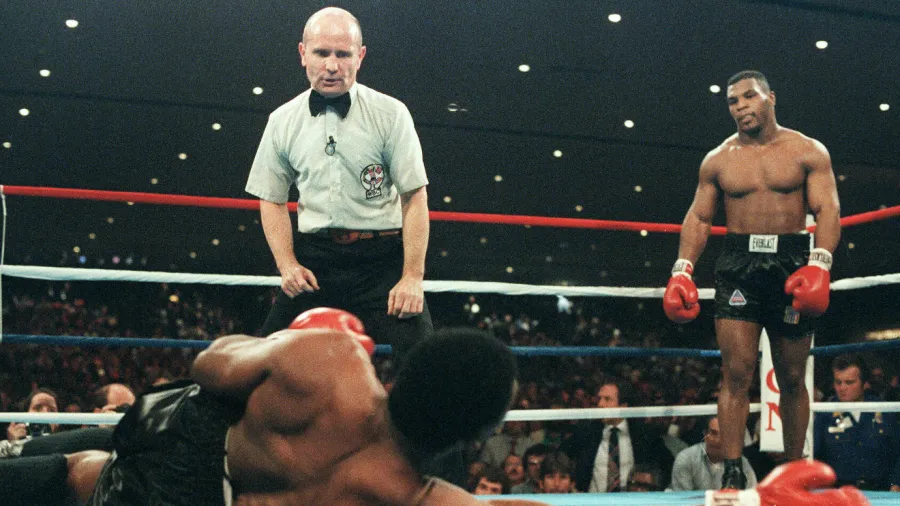
Fear — Friend or Foe? Handling Real-Life Challenges… And Threats
When you step into your everyday world, are you situationally aware of your surroundings, or simply afraid of them?
Do you know what to do if a worst case scenario presents itself to you? Are you afraid or prepared for FOCUSED ACTION?
It is all too easy to define fear in negative terms.
It seems natural to do so, because this is how most of us view threat and challenges to our safety and well-being. But It is not all that simple. The following addresses the important emotion of FEAR:
Earlier in my career I became acquainted with a world famous athlete who had never lost a match in his area of expertise. He can remain nameless regarding our purposes here, but let’s explore how he viewed fear and how fear can promote positive or negative outcomes. We will call him Joe.
Joe and I were having dinner one evening and he mentioned he was a little confused about his feelings. He said, “Here I am, the world’s greatest at two things – the sport I play and the expert knowledge I have of the history and proceedings of another sport I do not engage in physically. Yet, with all of this expertise and confidence, I fear getting married.”
This same exceptional athlete felt “fear” and the emotional arousal it brings with it, is essential to world class athletic performance.
Cus D’Amato, Trainer for Mike Tyson, felt similarly. Both Joe and Cus felt, fear, anxiety and high emotional arousal are essential, if you are to be fully prepared for high competition, facing another who is out to conquer you, such as in boxing, wrestling, handball, tennis, etc. If you are entering the ring, facing a monster competitor, whose sole purpose is to take you out, you had better be prepared. The “edge” you need for victory is high focus, high energy and total commitment to winning in this moment.

The point is this. Fear is not always debilitating.
It is useful in highly competitive environments. The Fight or Flight response comes to mind.
When faced with threat of any sort, we react quickly whether this be a challenge to be met – or avoided. If it is to be met, we want maximum capability and this capability is generally the result of previous training, preparation, acquisition of the performance skills driving these capabilities (our own safety, our ability to be self-protective) while also putting the competitor out of commission as called for, such as in the obvious case of competitive boxing.
Let’s keep in mind, the above examples of the value of fear are distinct from most everyday realities, such as the risk involved in getting married, where you don’t outperform and there is no “one winner.” You can prepare for competitive boxing with massive training schedules. This is a single event, or series of events, where you are highly trained, know you are facing world class danger, and have your highly aroused, intense mind/body integration to serve your full-body attitude.
When it comes to fear in every day life, we want to be prepared with the needed “survival skills”.
The best offense is a good defense—Vince Lombardi
In our In The Zone Skills Training, you learn how to be Relaxed, Balanced, Flexible and Focused in everything you do, at home, work and elsewhere. You learn High Performance Skills basic to any and all performances, whether it be boxing, golf, writing code, interacting with others socially and professionally – as you achieve certification as an In The Zone Life Coach. Let’s see how this works.
Let’s start with a definition of FEAR.
Fear is “an unpleasant emotion caused by the belief that someone or something is dangerous, likely to cause pain a threat.” It is associated in general with a “trembling response,” insecurity, apprehension. Stress hormones such as cortisol and adrenaline are released into the blood stream, blood pressure goes up, heart rate increases, blood flows from the heart into the limbs, we tend to breathe faster with shallow breaths. From a neuropsychology perspective, the body senses danger, sends messages to the hypothalamus, on to the amygdala, the fear center of the brain, which then alerts the body to take action of a “flight or flight” nature. Like Mike Tyson, we are ready for action, unless the arousal is so great and uncontrollable we become ineffective, confused and basically “a sitting duck.”
There are many Fear Factors, but the most important predictor of debilitating fear is LACK OF EDUCATION.
When we avoid learning about potential danger we become increasingly mindless and functionally disarmed. Coping with life challenges involves learning about these challenges in advance, and making appropriate adaptations prior to and during their occurrence. But what do most of us do? Watching television (Talk TV) accelerates higher levels of fear. Always thinking about theft, being stalked, man- made disasters, wars. terrorist attacks, the News, failing economies, all of these involve negative thinking and negative emotional dispositions reinforced throughout the day. It is said we typically experience about 50,00 thoughts a day and we have to wonder what percentage our negative thoughts command. It is an individual experience.
If negative thoughts dominate your consciousness, this is the threatened life you are choosing to live and the ongoing foundation for a life driven by fear.
There are a few fundamental fears such as falling and loud sounds, both innate. We have fears of heights, illness, injury, spiders, insects, paying bills, germs and the list goes on. Most of our fears are self-generated, emerging from past experiences, those we have talked with and what they have said. In this way of living we develop a chronic state of apprehension, high, debilitating emotional arousal, avoidance overcomes approach and we systematically withdraw from an adaptive life. We become dissociated from ourselves, unable to have loving feelings, exhibit a learned helplessness, phobias, anxieties, mood swings and obsessive-compulsive thoughts.
How The Mulry Method Transmutes Fear into Success
Our psychoeducational based training system, referred to as The Mulry Method, integrates two science-based theoretical models with our tried and true In The Zone Skills Training.
The first of the two theories is Rotter’s Social Learning Theory (SLT), and its pioneering Internal Locus of Control research, clarifying our mental/rational side – with an emphasis on EXPECTANCY for success or failure.
The second science based theoretical model is Polyvagal Theory by Stephen Porges, clarifying our physical/visceral functioning with an emphasis on NEUROCEPTION. Both expectancy and neuroception are processes within, alerting us to the likelihood of forthcoming danger.
-
- Expectancy is basically a probability statement.
-
- Neuroception is basically a “gut level” apprehension.
Both influence our ability to anticipate threat and danger. Like the Amygdala, they can be thought of as “alarm systems within.”
Once we have the skills to control these alarms, we can be effective in overcoming fear in our own self- defense.
Comprehensive e-Learning courses
Becoming an In The Zone Life Coach, equipped with a science based body of knowledge and self-mastery performance skills, will be useful in all aspects of daily living, at home, work and elsewhere. Life Coaches have an advanced understanding of the importance of successful adaptation, development of self-protection skills in their own lives and then in the lives of those they will serve. All certified In The Zone Life Coaches have continuing and full access to our Mini-Courses to supplement interpersonal Coaching services.

